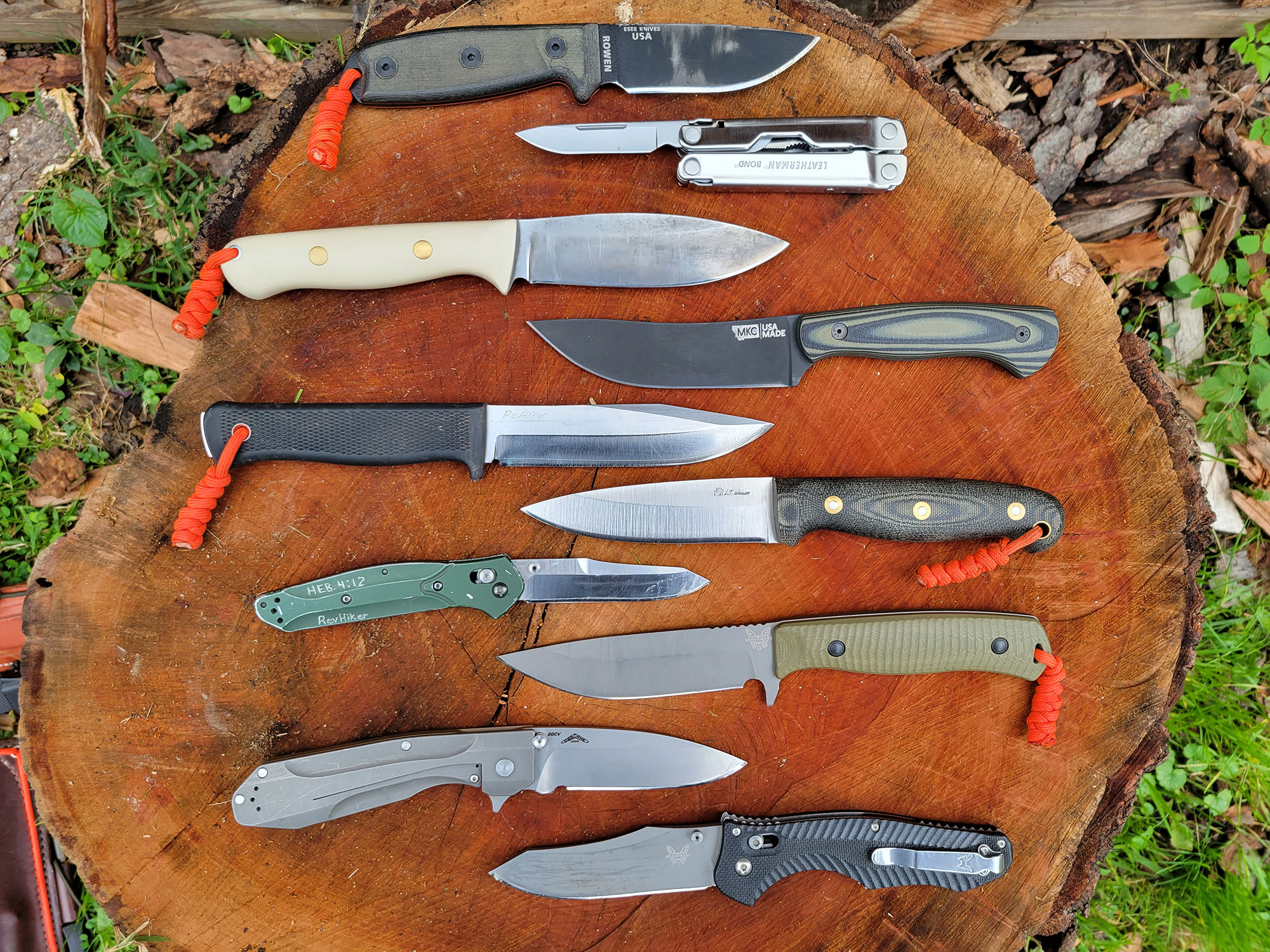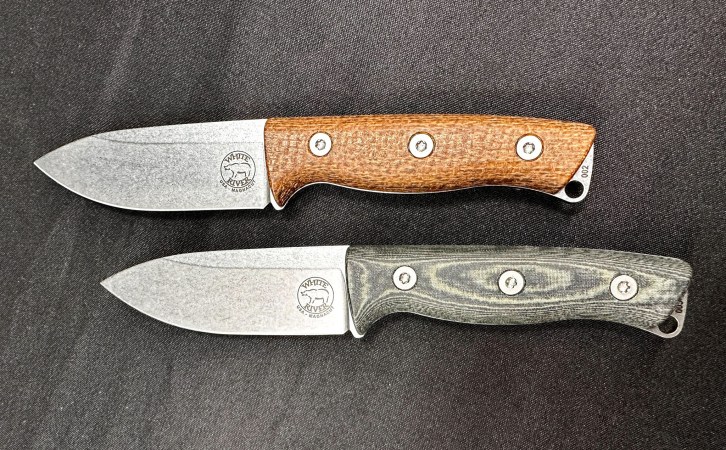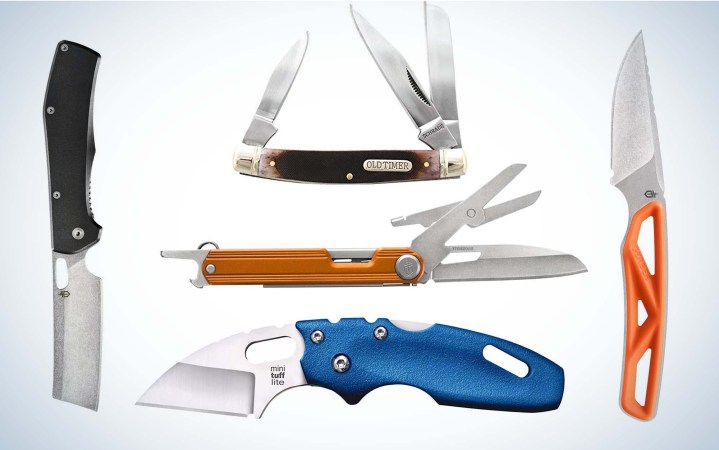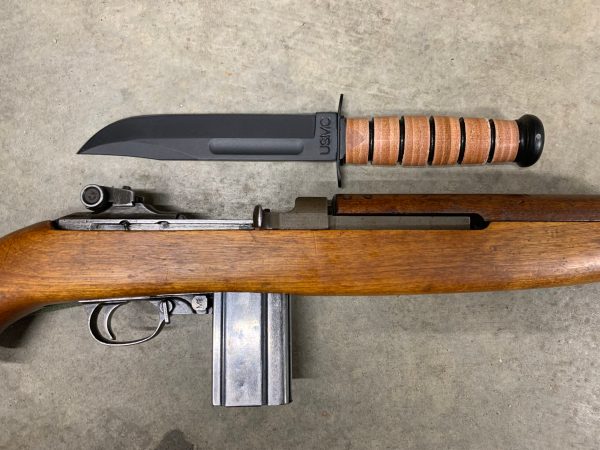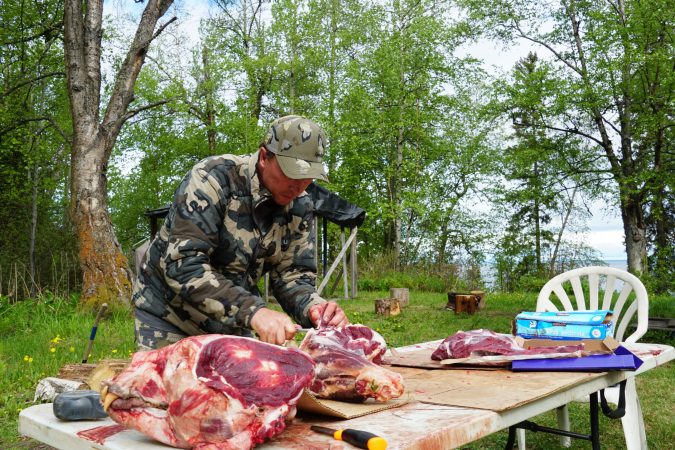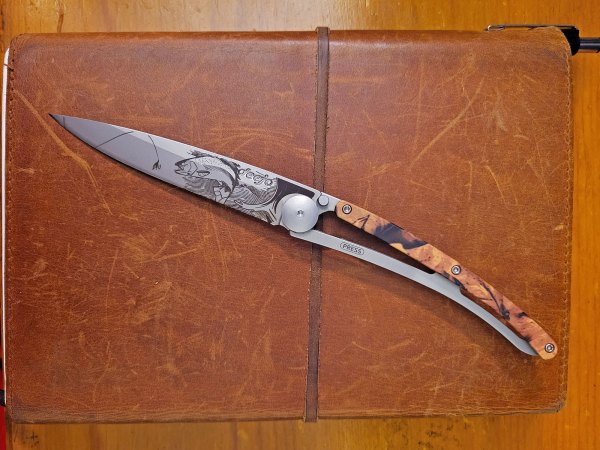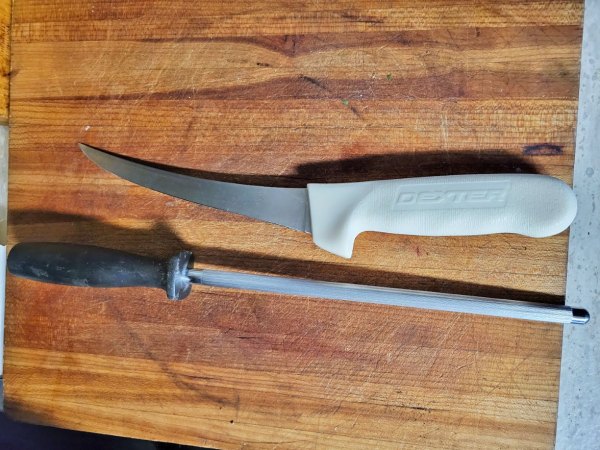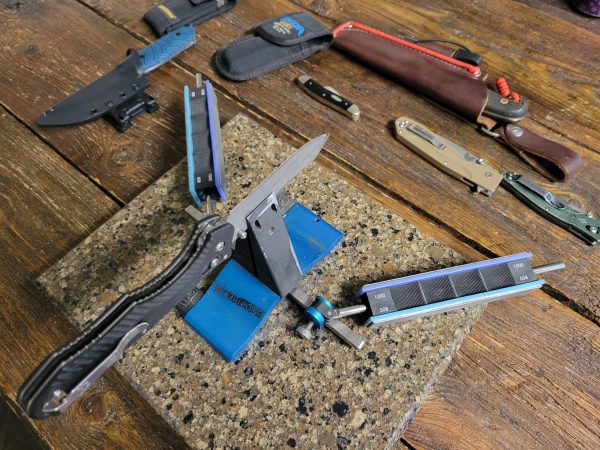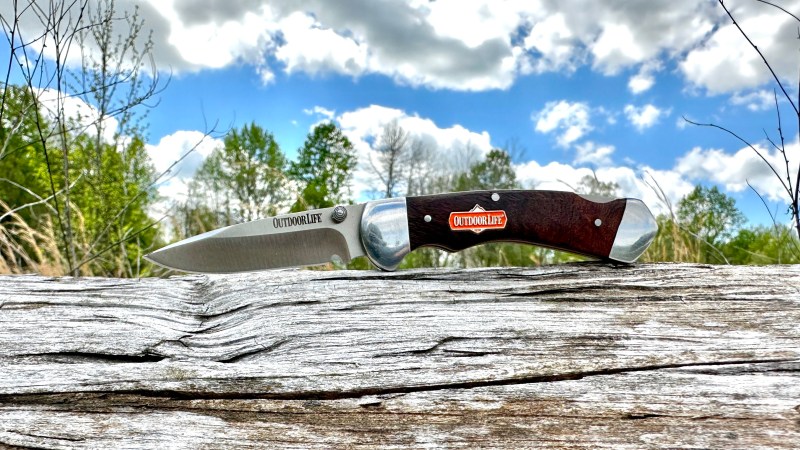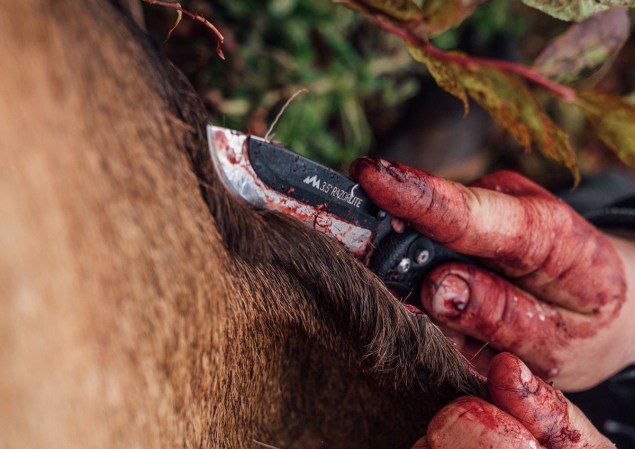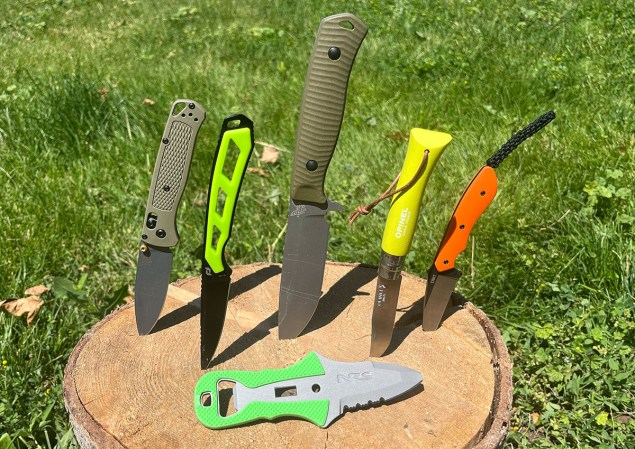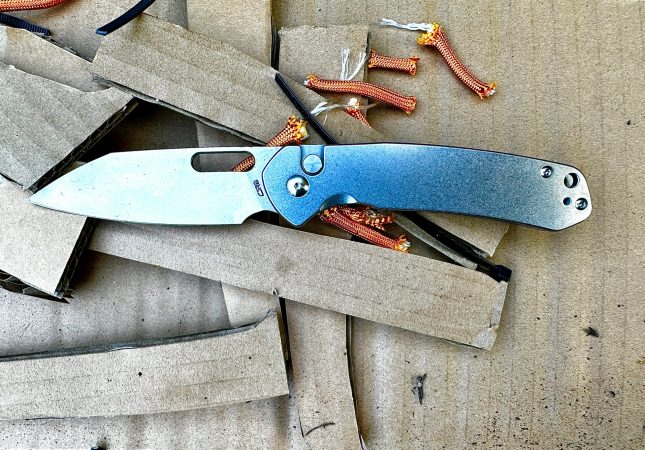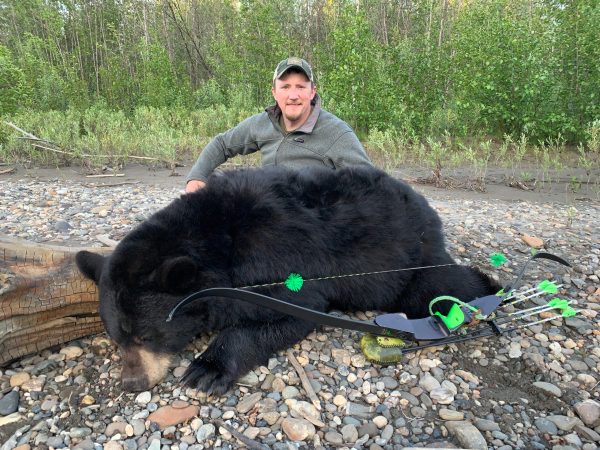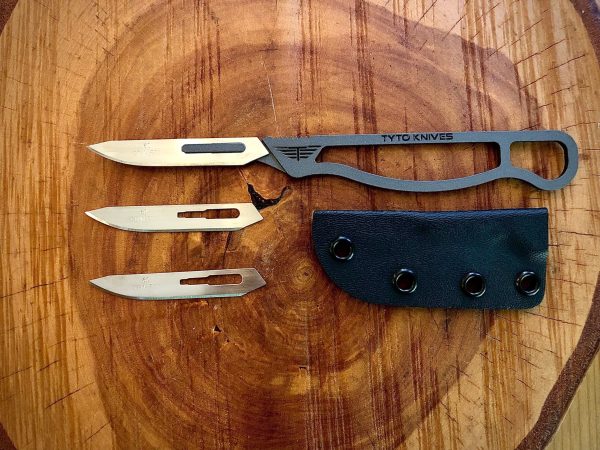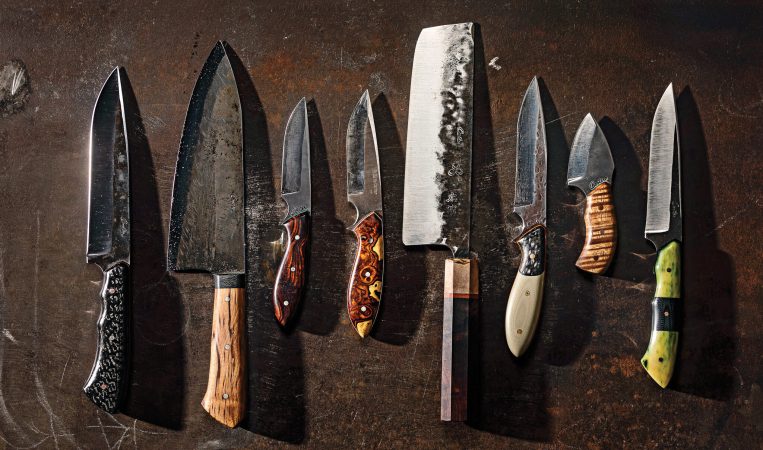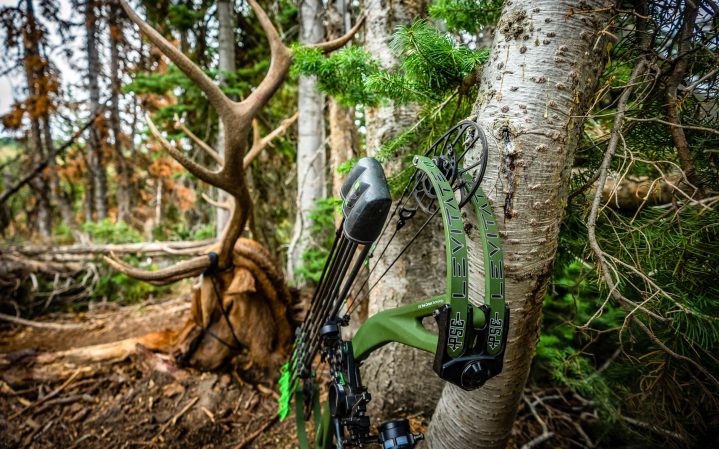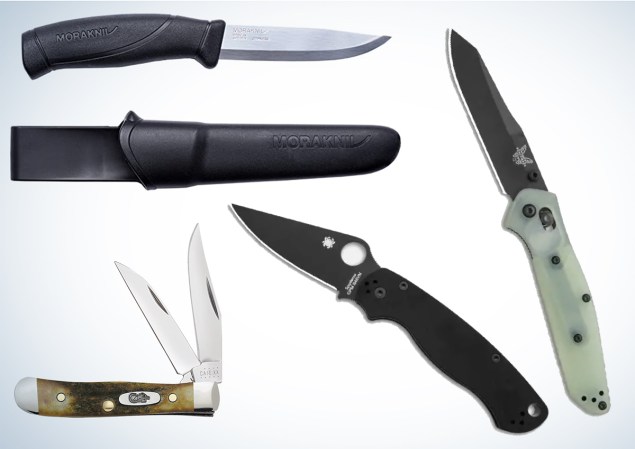We may earn revenue from the products available on this page and participate in affiliate programs. Learn More ›
Does the steel your knife blade is made from really matter, or is it mostly marketing so companies can help you lighten your wallet? The answer is… Yes. Yes, knife steel is important, and yes, there are some marketing tricks and traps out there. To help you separate the important characteristics of knife steel from marketing gimmicks, I’ve put together this simple guide.
But, before I make any recommendations, we need to understand why knife steel is important and review some basic terms used to describe steels and blades.
Why Is Knife Steel Important?
Understanding knife steel is important because it can mean the difference between a great time outdoors, and a miserable one. Maybe you brought a knife with cheap steel to field dress an elk? Hope you have the patience to stop and sharpen your knife four times (or more). Got a brittle steel for bushcraft? Your one knife will turn into two smaller ones. Did you buy an uncoated carbon blade for your soggy PNW hunting trip? Welcome to rust city.
A little bit of research and steel knowledge can prevent pain and wasted money in the future. Understanding the basics of knife steel will also help make your time outdoors more enjoyable because your blade will perform the way you expect it to.
Important Knife Steel Terms
These are the descriptors often used to describe the steel of knife blades.
- Toughness: A steel’s resistance to breaking or chipping due to bending or impact.
- Edge retention: How long a knife will stay sharp.
- Hardness: A steel’s ability to be hardened, it’s measured in HRC on the Rockwell Scale.
- Corrosion Resistance: How readily a steel will rust
Knife Steel Guide
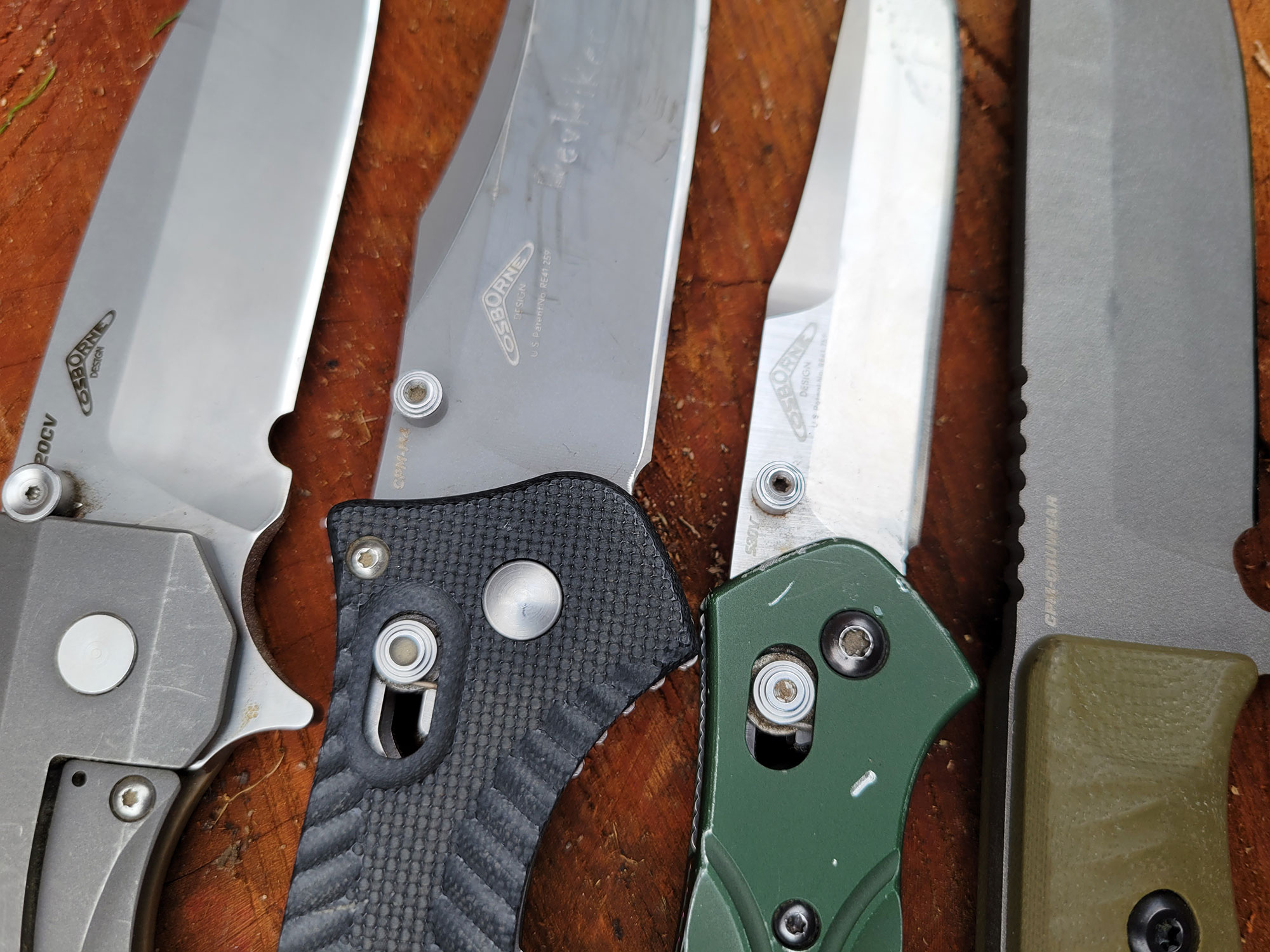
Knife steels can be broken into two main categories: Stainless and Carbon. Stainless steels have a much higher degree of corrosion resistance, but that doesn’t mean they can’t rust. As the name suggests, stainless blades do stain less than carbon steels. We will start with some solid choices in carbon steels, and we will go through some of the popular steels (and the ones I like). Then we’ll move on to stainless steels. For each category, steels will be listed in order based on edge retention from least to greatest. But know that, generally speaking, heat treatment chosen by the knifemaker can affect edge retention.
Carbon Steels
1095
Common Use: Outdoor, survival, and hunting knives
This steel is somewhat of a benchmark steel. It is widely used, and many companies and makers have good heat treats for it. ESEE and KaBar use it almost exclusively, and they do very good heat treatment to get the most out of it. 1095 is a relatively tough steel, but it will need to be sharpened or stropped fairly often. The good news is that carbon steels are usually easier to sharpen than Stainless steels, and 1095 readily comes back to shaving sharp with a little stropping. It will rust in wet environments if proper care isn’t taken, but it won’t heavily pit. It will stain and have small amounts of surface rust that can usually be wiped away. 1095 is what I consider the entry point for carbon steels. There are other carbon steels that rank below 1095 in edge retention that just aren’t worth it, in my opinion.
A2
Common Use: Outdoor, survival, and hunting knives
This is a step up from 1095 in edge retention, and it is tougher as well. This steel seems to readily patina and have blues and dark gray staining, but doesn’t accumulate little orange rust spots. It’s easy to sharpen, just like 1095. A2 is more common from small-batch knifemakers like L.T. Wright and Bark River Knives.
5160
Common Use: Outdoor, survival, and hunting knives
This is a high carbon steel that has some added chromium which makes it more corrosion resistant. It is also a very tough steel, which makes it a solid choice for hard work. Winkler Knives makes some excellent blades with 5160. While this steel is a little low on carbon compared to some others, it still manages decent edge retention, and is easy to touch up with a strop.
CPM-D2, D2
Common Use: Folding / EDC, outdoor, and camping knives
I specifically put CPM-D2 steel on this list, and not the generic D2 label. CPM indicates that it’s made by Crucible Metals, and is a big step up from regular D2. The problem with D2 is that it’s made by lots of companies in lots of places, and frankly, it varies greatly in quality. Plenty of D2 knives are good, but plenty are sub-par. Your best bet is to choose CPM-D2, or use D2 from a good company. D2 is very corrosion resistant for a carbon steel, and some call it semi-stainless. CPM-D2 offers better edge retention and easier sharpening and higher toughness than other D2 because it’s made from powder with a different process that gives it a more consistent and finer grain structure than regular D2.
52100
Common Use: Hunting and camping knives
This was originally a tool steel used for mainly ball bearings in industrial settings. But, as luck would have it, it makes some great knives as well. Montana Knife company uses 52100 and does a great heat treat. This holds an edge longer than the other steels on the list so far, yet it is still easy to strop back to razor sharp.
CPM-3V
Common Use: Hard-use, camping, bushcraft, and survival knives
3V is one of my all-time favorite steels. It won’t readily rust, it’s incredibly tough, and it holds an edge better than most carbon steels while still being fairly easy to sharpen. Because it’s so tough, makers can also make it very hard and wear-resistant without being too brittle. Most makers seem to have figured out a good heat treat for this steel and it performs very well across brands.
CPM-CRUWEAR
Common Use: Folders/EDC, outdoor, and hunting knives
This is currently my favorite general purpose knife steel. All steels make compromises in some way, but Cruwear is able to score very well in edge retention, toughness, and can be hardened fairly high without being brittle. Yes, it can rust, but not badly, and not quickly. Most Cruwear blades are coated, which mitigates rusting as well. If you’re looking to find a Carbon steel that can take care of a gut-skin-butcher job on an elk without needing sharpening, look for M4 or Cruwear in your hunting knife.
CPM-M4
Common Use: High-end folders/EDC, and competition choppers
This steel is all about edge retention. It’s not as tough as others, and can chip under heavy impact, but for cutting performance, M4 is excellent. It has very high wear resistance and very long edge retention. It will stain if not cared for, but it’s not too hard to take care of—if you don’t put it away wet, you shouldn’t have problems. Just apply a light coating of oil occasionally. Benchmade does an excellent heat treatment on their M4 blades and gets top performance out of them.
READ NEXT: Best Hunting Knives
Stainless Steels
420HC, 420J2, 400 Series
Common Use: Budget folding/EDC, outdoor, and survival knives
These series of steels represent an entry point for stainless steel blades. There are other 400 series steels (440A, 440B, 425m), that are mostly similar in that they have low carbon content, and therefore can’t be hardened very high. It makes them very tough and hard to break, but they don’t hold an edge well at all. However, Buck and Leatherman make the best of these cheap steels. They have solid heat treatment procedures and get as much as they can from the 400 series steels. The only 400 series stainless that actually has solid performance is 440C, which has more than double the carbon of the others. Even for a budget blade, the 400 series steels are the bottom end of acceptable performance.
AUS-8
Common Use: Budget folding/EDC knives.
The AUS series steels are a step up from the 400 series steels with some added ingredients to give them better edge retention and maintain toughness. AUS-8 is the most popular of the series, and gives a decent performance in edge retention and ease of sharpening. This is another budget steel that can work for pocket knives that don’t see frequent use.
H-2
Common Use: Folding and fixed blade dive knives
This is an excellent stainless that is almost impossible to rust. It’s used in saltwater dive knives and stands up to prolonged saltwater exposure very well. It does not hold an edge all that long, but isn’t too bad to sharpen. It’s fairly tough. If you need a blade that will not rust, check out H-2. H-1 and LC200N are also great choices for extreme corrosion resistance.
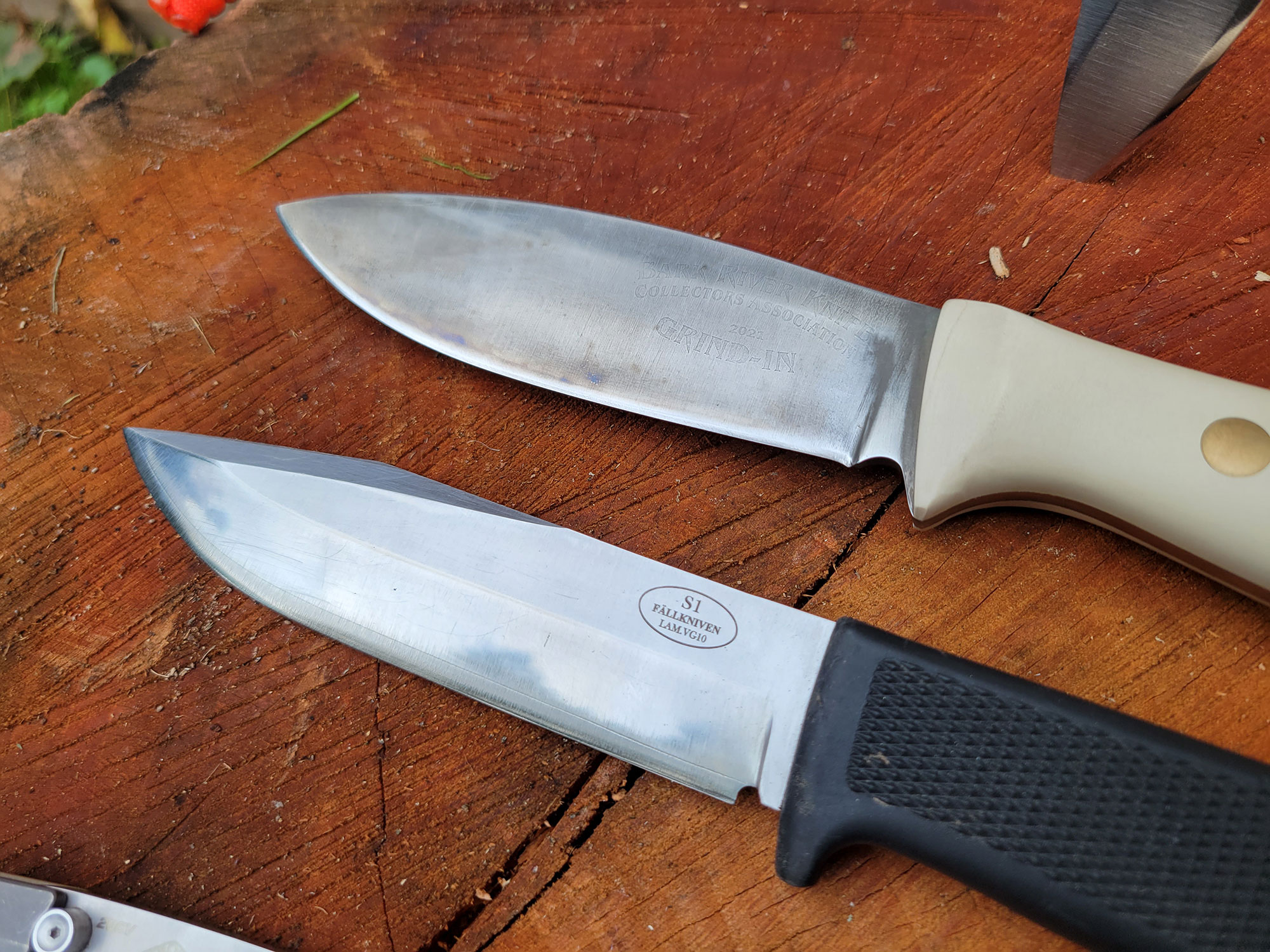
VG-10
Common Use: Folding/EDC, general purpose outdoor knives
VG-10 has much better edge retention, but is not as tough as the previous stainless steels. When it came out, it was considered a super steel, but lands solidly in the middle of the stainless steel spectrum these days. VG-10 is a solid choice when high corrosion resistance is desired, such as in kitchens and wet or salty environments.
154CM, ATS 34
Common Use: Mid to High-end folders/EDC, mid-high end kitchen/butchering knives
These two are essentially the same steel from different companies, and both are solid performers. Expect good edge retention, decent toughness, and good corrosion resistance. 154CM is a solid choice for pocket knives and hunting knives. It holds a good edge, but, unlike some other stainless steels, isn’t too hard to sharpen.
S30V, S35VN, S45VN
Common Use: Prevalent in many quality folders and fixed blades
These three steels are similar, and are great all-round stainless steels. They all bring very good edge retention and are still not too bad to sharpen. They perform well in folding knives and fixed blades as well. Once sharpened, they will only have the super fine edge for a short while, but they retain a good working edge for a long time. S30V is my favorite steel for EDC knives. S35VN improves on S30V for toughness and has shown to be tougher than S45VN. The next evolution S45VN, has better edge retention and corrosion resistance. One note is that while S35VN and S45VN are technically better than S30V, knives made in those steels typically cost more than S30V counterparts.
MAGNACUT
Common Use: High-end folders/EDC, and fixed blades
This is the latest, greatest stainless knife steel to hit the market. The good news is that it actually lives up to the hype. Magnacut was developed by Dr. Larrin Thomas and produced by Crucible as a knife steel. It wasn’t borrowed from another industry. It offers excellent edge retention and good toughness, and somehow it’s still fairly easy to sharpen, unlike the other stainless steels in this range. Magnacut is being adopted by several big makers, which is good for consumers. This is a do-all stainless, and perhaps the best all-round knife steel for the outdoors.
M390, 20CV, 204P
Common Use: High-end folders/EDC knives
These three are metallurgically the same steel from different companies. If you are looking for a steel to hold an edge for a long time, these would be excellent choices. Expect very high wear resistance, but the steels tend to be more susceptible to chipping. These steels are mostly found in higher-end folding knives, and not too often in fixed blades where toughness is more important. There will be some effort needed to sharpen these steels since they are so wear resistant.
S90V
Common Use: High-end folders/EDC, high-end hunting knives
This steel can be made very hard, and has very high marks in wear resistance and edge retention. Because of this, it’s lower in toughness, and takes a lot of effort to sharpen. Regular stones don’t sharpen S90V well, so if you want this steel for superior edge retention, plan on buying diamond stones to sharpen it when it finally does go dull.
READ NEXT: Best Bushcraft Knives
Knife Steels to Avoid
There are some red flags that should steer you away from certain blades when selecting a knife. One big red flag is non-specific labels such as “surgical stainless”, “stainless”, “damascus”, or “high carbon.” You’ll see these labels in marketing materials or stamped on blades. These catch phrases mean next to nothing and generally point to a maker wanting to appear to have quality when there is little to be found.
There is no designation or metallurgical recipe for “surgical stainless”. It just sounds good because it has surgical in the name.
Damascus is another label that can be misleading because there are wide ranges of Damascus quality. If a knife is inexpensive and claims to be Damascus, I’d be skeptical. True Damascus is made by layering steel of different properties, which creates a unique pattern when etched. Skilled makers can produce intricate patterns with this technique and while there isn’t a performance benefit, there’s no denying the beauty. Cheap imitations of this are usually laser etched patterns or made of inferior materials.
Another red flag is a knife where there is no information to be found on what steel is being used. If a maker is using quality materials, they will be listed, usually prominently. A total lack of information is a common way to keep a buyer’s mind off the subject.
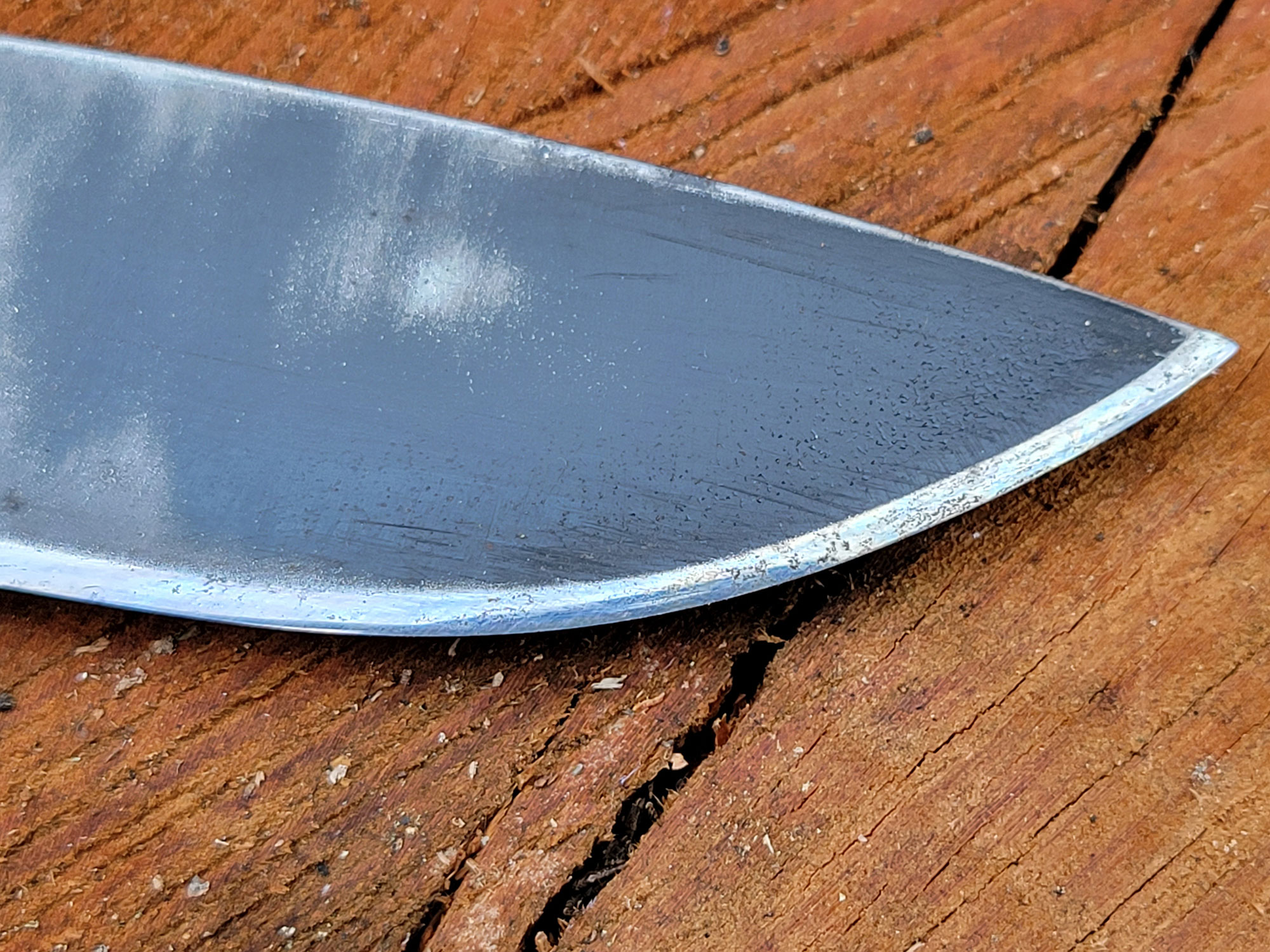
So, What’s the Best Knife Steel?
There’s really no such thing as a singular “best knife steel” since they all have different properties, advantages, and disadvantages. If you want a solid steel that won’t break the bank on your next folding knife, my personal favorite is S30V because it’s well rounded and not too expensive. For a hunting knife, I love Cruwear or 52100, and for a bomb-proof blade, I’m grabbing something in CPM-3V.
Final Thoughts on Knife Steel
There are dozens of knife steels on the market today, and while this guide is far from exhaustive, it will at least get you pointed in the right direction, and give you some good examples to keep an eye out for. Some of these steels will cost significantly more than others, but that usually comes with a big bump in performance. I have found that it’s better to have a “buy once, cry once” approach to knives.

